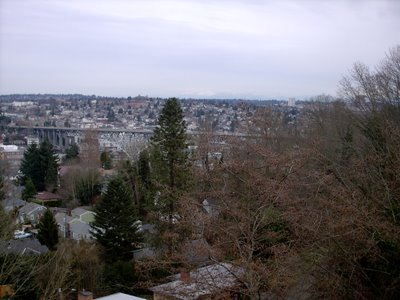On the night of February 1, 2006, I fell asleep.
On the morning of March 4, 2006, I woke up. There was a black Accupress binder next to my bed, so I took it with me when I stepped in my car and drove through the morning rain, grey skies lowering. Upon arriving at the Kurata Thermodynamics Laboratory, I presented this binder to Dr. Howat, who gave some acknowledgment and wrote my name down on a list.
I only have vague memories of the period in between those two events, so I am led to the conclusion that I slept the whole time. I do remember some of my dreams, though.
Most of the time I was in a room with computers lining the walls and windows covering most of one wall. The windows could have been nice, except that instead of looking out over a twinkling cityscape, or the ocean, or a forest, or a mountain, they faced a brick wall. And at night, the wall was just a shapeless black.
It was night most of the time in my dream. I don’t remember seeing much sunlight.
There were other people in this room, but they didn’t say much. I recognized most of them, although they only seemed to be chemical engineers I know. Not the usual mash-up found in dreams, where cities are overlaid, and a person often has one appearance and a different personality.
One time in a dream I found myself getting off a plane in some
Blade Runner city: wet, drizzling rain, dark skies but for the light of skyscrapers. Like one of those mash-ups, it suddenly turned into Seattle as soon as I saw the Space Needle on the skyline. I spent quite some time in Seattle, and it was enjoyable, but for the knowledge that I would have to return to that room all too soon. And even in Seattle, I found a binder shackled to my leg, dragging me back to my hotel room to scribble formulas in it for hours.

In downtown Seattle, I found a musical fountain. The jets of water sprayed in time with whatever was playing, which happened to be Bach’s “Toccata and Fugue in D minor” when I stopped by. It was some sort of orchestral arrangement, not the organ version that I love best, but a decent effort nonetheless.

The fountain was the sort of place where, in the summer, children might run around haphazardly, shrieking with glee as the cool water drenched them. But it was cold and a little windy when I visited, so the fountain played alone.
But on the plane that carried me away from Seattle, something magical happened. I was flying over Idaho (sometimes called ID) when the clouds parted and breathtaking landscapes were revealed below. And even though I knew I would soon return to the room for days more of toil, I was able to let that fact go for a time, leaving me at peace. My cares having departed, I gazed at snow-covered mountains and rippling watersheds that wrinkled the Earth below.


Even as I left the mountains and crossed over starkly flat plains, I continued to be amazed, because it seemed that no people lived in this vast area at all.
Could such large areas of wilderness still exist in the Lower 48 states?, I wondered. It looked more like Antarctica than America.

Then, at the edge of more mountains, I saw a road. A single scratch of habitation existing in what many would call a wasteland. Many, but not myself; I have always found snow comforting and beautiful. This is no doubt due to my North Dakota childhood, which taught me many ways of using snow for recreation.

The snow cover on the mountains decreased with my latitude, as did the sun’s height in the sky, until finally I found sunset over Colorado. And so the sky dimmed, and my wondrous visions of natural beauty ended. But I knew the images that remained in my mind would shield me from the troubles I still had to face. And it is perhaps this assurance, this hope that I remember most from my strange dream.











